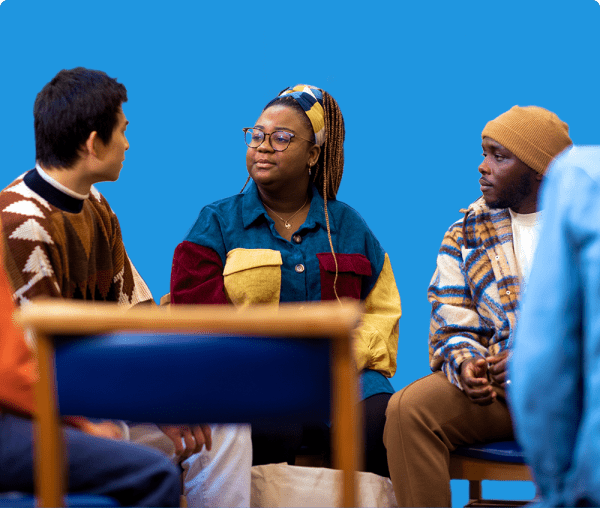6 ways to support BIPOC communities
 Gohar Chichian
·
8 minute read
Gohar Chichian
·
8 minute read
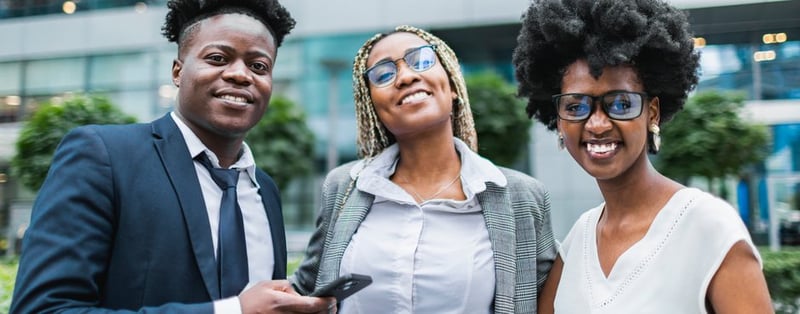
In 2020, philanthropy came together in the wake of the murder of George Floyd, making pledges to create a more collective effort around supporting Black, Indigenous, and People of Color (BIPOC) communities. Three years later, what is philanthropy actively doing to support BIPOC communities? How are grantmakers listening and supporting the efforts of organizers, donors, board members, and community grantees that represent Black and Brown communities?
In March, we held a discussion with BIPOC women in philanthropy focused on creating a culture of wellness. Our speakers provided candid insights on how crucial it is to elevate the voices of women of color leading philanthropic work. We received extensive feedback from attendees that they wanted more programming centered around BIPOC women in philanthropy.
In response, we hosted a July follow up discussion to explore how philanthropy can provide more opportunities and inclusion for women of color. The discussion was moderated by Emily Castro, Catchafire’s Nonprofit Engagement Manager, and included guest speakers Chantias Ford, Director of Programs at the Trust Based Philanthropy Project, and Tyeshia Wilson, Director of Engagement at Philanthropy Together.

Here are our top six takeaways from our conversation on how grantmakers can improve their practices to more effectively include BIPOC staff and serve community needs:
Building a culture of collectivism ensures that a community is focusing on the needs of the entire group. Operating through collectivism keeps people attuned to pursue a common goal.
1. Collectivism starts from within. Implement wellness and rest within your organization so that you can more effectively work on your mission, and shift your culture to be more collective, participatory, and most of all–human.
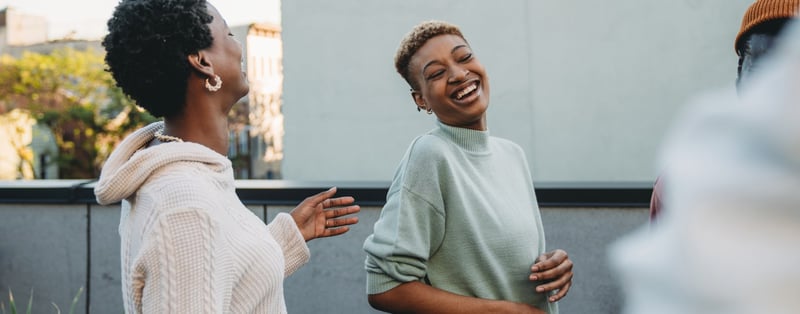
Tyeshia: First off, take care of your people. A lot of nonprofits after the George Floyd incident, we all got woke and philanthropy showed up and we were out here doing all the work, making pledges and commitments. We saw organizations instill the spirit of collectivism during that time. One of the ways in which you can start is taking care of your people. A lot of nonprofits don't center people, sabbaticals, rest…rest is our birthright. We have got to rest so that we can continue to serve well. Even something as simple as rest is collectivism, caring for your people from the inside out.
Chantias: What is the culture that you’ve established and how can you start to shift it and make it more human-centric? A big thing is also around shifting your organization culture to a learning culture, redefining and reframing risk and a fearful approach to failure. A perfectionistic culture trickles down and permeates the funder-grantee relationship. If you take a mistake you've made and lift it up, and say this was a learning opportunity, that’s a small step you can make to shift the culture and make people more comfortable with sharing.
Of course you need grantee feedback, but also have space and opportunity for internal folks to be able to give that feedback as well, that will help create a more collective, participatory, and human approach.
2. Acknowledge the historical and institutional inequities at play, and use this as an opportunity to assess how philanthropy can collectively improve.
Tyeshia: We're trying to create a more equitable, kinder, world, and doing all the things in between of what that looks like for our specific communities. But all too often philanthropy fails to achieve that goal.
Our society upholds a system of white supremacy, and we're trying to disrupt that. Philanthropy has the opportunity for us to just take the lid off and do something so radical and disruptive for all of us to be well. We really can do some innovative radical things to bridge inequities and to really make this world what we want it to be.
3. What the data tells us is that there are inequities in philanthropy. We're still funding in the same way even though the data is telling us how we need to do better. Why is only 8% of all philanthropic funds only going to communities of color? Why is only 2% of funding going to support women and girls?
Tyeshia: Year after year, the numbers are still the same, and actually they're dwindling. So that disappoints me about our industry. Part of my role at Philanthropy Together and what we're doing is trying to diversify and democratize philanthropy in a way where we can bring in more representative voices that are from the community that will help us to really disrupt the inequities that we see.
We need more people in philanthropy. As it stands right now, there's a lot of wealth in the hands of a few. When you have a small group of people that are hoarding resources and then are giving it out in ways that are inequitable, that’s what the data is telling us. Take a look at this report on the disparities in funding for leaders of color.
Chantias: I think about the big picture and why philanthropy even has to exist and the societal issues that we're still facing. It is disappointing to see how little the needle moves forward over the years. There are a lot of shifts that have happened, but it's still just disappointing to see the harm and hurt that's been perpetuated by the sector.
I'm talking about harm to grantees and communities that are seeking funding that don't get it. I'm talking about those that get funding and they have to jump through hoops and hurdles and redirect their focus and their mission to please funders. I'm talking about funders that have bullied and harassed and done all sorts of harm to the grantees and the communities they're aiming to serve. I'm talking about funders that didn't select communities for biased reasons.
I think about the harm that we have in prioritizing money over people and impact and improving things. And how we can spend all of our time and energy looking at dollars and focusing on that rather than really building strong, transparent relationships with each other and partnering in this spirit of service, to really support one another, and seeing this as something that's a mutually accountable relationship.
4. Work on reframing the narrative.
Chantias: I do think this narrative needs to be reframed. That we're not involved, that we're not givers, that we're not deep in this work, that we're not influencing and shifting the field, that we're always the ones just taking, or we're always the ones receiving and not giving.
Tyeshia: Here in the States, when we think about philanthropy, we think about charity, when really it is about empowerment of us as people, and showing up for one another. Communities of color, the narrative the media paints these pictures of us being more so recipients of charity instead of actually being philanthropists. I do think that it is important for us to own that narrative. It's not just about the money. It's not about how you contribute finances. That's one of the ways that we can be philanthropic, but a lot of the stuff that we do doesn't get counted. Meaning the ways that we advocate, use our testimony, our time, using our skills to serve. All of that really matters, and that makes me a philanthropist. So I'm gonna count it all, and I'm gonna own that title.
5. Relationship building remains crucial to community impact. Grantmakers need to prioritize the funder-grantee relationship.
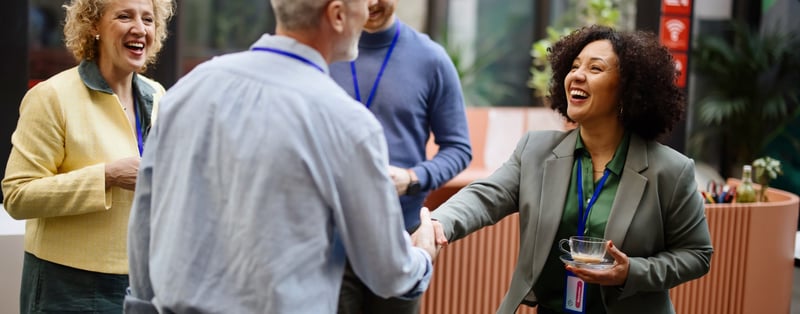
Chantias: We start off with the humanistic approach. We stop and look at all the systems and structures that we've implemented and ask why we are doing this? How can we be grantee-centric? How can we be relationship-centric? How can we be in community with them, in connection with them, and see this as a mutually beneficial relationship. It’s really stepping back and saying from a funder's perspective, how can I build relationships with grantees? How can I be in community with them?
How can I pick up the phone, have conversations with them, how can I show up at their events? How can I support them beyond just writing this check? How can I hear their pains and what can I do in my positions of privilege to support and address their pains? There are so many different ways to really build those relationships with grantees so that you can start to address some of that scarcity mindset, some of those power imbalances and really build those stronger transparent relationships.
Tyeshia: Wherever you are seated, whether you are a program officer, in fund development, a coordinator, think about where you are sitting right now and how you can align your organization or push your organization to be more values-aligned with the things that's going to make our communities more whole. Equity, justice, love.
It's on us. And if we're not pushing that needle, then what are we doing?
Philanthropy was never supposed to be top heavy. It was never supposed to be in the hands of a few. It is truly, for us, it's from community. We're getting back to that place where organizations and even the people, we are demanding being partners in this work
Philanthropy, where we're going is that it will be from the community up. And I don't, I don't even like to say bottom to the top cuz we're not at the bottom, right? We are partners in this work together collectively. We all have a voice. That's what makes this nation so beautiful is the diversity of our opinions and our thoughts and our talents and everything that we bring. So philanthropy now is being challenged to consider community first to center the voices of those that you are looking to serve. Instead of going into the community, we'll give you a gift and that's it. No.
How are we lifting up the voices, the people with the lived experiences, those who are closest to the issues hold the solutions to what we are trying to solve?
6. Think big: Where can trust-based philanthropy go next?

Chantias: I'm having conversations every day with funders that are making the shifts. But I would love to see more. I would love for it to be the norm that funders just jump into relationships with communities and just give the money away and call, and say, what do you need?
‘All right, I'm there. Here's the check. In fact, I'll be in the front row cheering your students on, cheering your community on, giving money, giving time, giving effort.' I would love to see philanthropy shift the way we are operating and make it community-centric to the point that we don't need it.
We should be working ourselves out of a job. We should be eradicating homelessness, we should be eradicating poverty, that's what these foundations are for. That's what we're trying to work towards. We spend all this time doing impact statements and evaluations and reporting and monitoring and learning and all this kind of stuff. And we're slowly inching towards it.
I do want to acknowledge social change is very complex and does take time. But I think we also overcomplicate things. And so that's the shift I would love to see.
Tyeshia: This is a global movement with people saying enough already. We can do it ourselves. If institutional philanthropy is not gonna flow the money and it's gonna keep hoarding funds and these endowments, then we're gonna pull our resources together to fund and liberate the funds and support these organizations before they fold.
A lot of organizations of color are at risk of folding. These are the organizations that are in our backyard that are running diaper pantries, that are running after school programs on fumes. Giving circles are a disruptive, powerful group and community of everyday givers that are pulling our resources to liberate funds.
We need more organizations to start hosting giving circles at your foundations. It's a model that allows the voices of the community to be centered in your grant making processes.
That's how we can better liberate funds if we have people that have the experience and that are from the community that have a say in where the funding is allocated. Instead of those that give the million dollar gift and they have the final say so. No.
So don't stop y'all. stay encouraged. We got this. The world will become better. It is becoming better, even just by us being in community today and talking about these things and more. And make sure, make sure you take good care of yourself and rest.
About the speakers
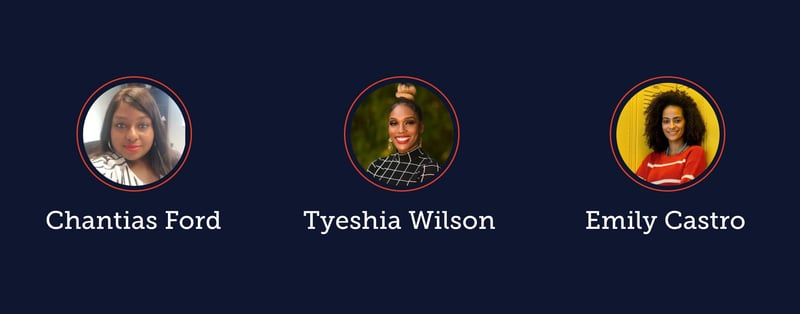
Chantias Ford, Guest Speaker
Director of Programs, Trust Based Philanthropy Project
Chantias leads in the development, execution, and evaluation of Trust-Based Philanthropy Project’s educational programming, webinars, and cohorts. In this highly collaborative role, she delivers action-oriented, transformative learning opportunities to philanthropy professionals looking to uplift trust-based philanthropy values and practices.
Tyeshia Wilson, Guest Speaker
Director of Engagement, Philanthropy Together
Tyeshia “Ty” Wilson is a community organizer, trainer, consultant and a sought-after speaker on equity in philanthropy, politics, community engagement and leadership. As Director of Engagement at Philanthropy Together, Ty leads the engagement strategy, connecting with giving circle leaders and members around the world in person and virtually. She also provides 1:1 and group coaching through Launchpad For You and Launchpad For Hosts, Philanthropy Together’s flagship giving circle training program
Emily Castro, Moderator
Nonprofit Engagement Manager
Emily’s goal is to always lead through authenticity and honor all experiences as learnings. She’s worked in the nonprofit sector for the past 10 years, both in the U.S. and Latin America. She was a Peace Corps Volunteer in El Salvador, and now serves as the Board President of the New York City Peace Corps Association. Emily attended SUNY Binghamton and earned a Masters in Organizational Change Management at The New School.
Join the Catchafire community
Visit our events page to RSVP for upcoming foundation programming and discussions like these. Catchafire is committed to creating learning moments for partners and thought leaders in philanthropic work to further the impact for all communities. We know that when we learn together, and listen and support one another, we have the opportunity for meaningful connections that can make a difference.
There are a number of ways that Catchafire supports BIPOC leaders, including our BIPOC leadership group, which is led by Emily. If you’re a grantmaker and would like to learn more about equipping nonprofits in your community with responsive, high-quality capacity building support, let’s connect.


